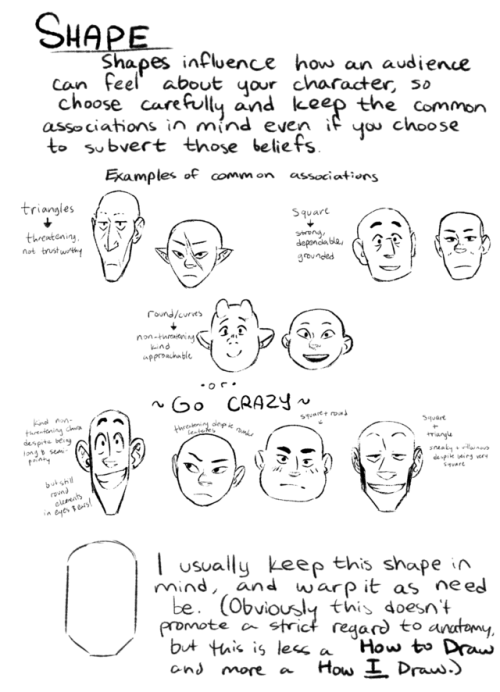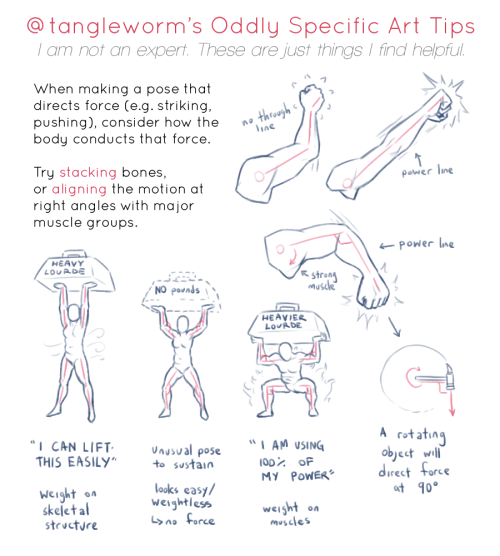Galaxy62 - Bonk

More Posts from Galaxy62 and Others
I can't use Paint 3D 😭 how did you do it?

first i start with a sketch of the 3d model i want to make

then i choose the doodle 3d option in the 3d shapes tab!

then you make the shape

i use the 3d view option to get a better look at what the whole model looks like then i tweak!

make sure to group all the parts before adding the colors to the model!

be very happy with your mushroom baby

save as gif, video, image or just the model
SHOW! OFF! YOUR! SHROOM!


JUST LET ME BE.



Just in case you forget this exists.
It exists.
5 Ways to Improve Worldbuilding in Speculative Fiction

Written by: Angela Brown
When you build a new world, you’re responsible for building the very essence of any good story. In the genre of speculative fiction, which can include science fiction, fantasy, and magical realism, it may be tempting to go overboard with your writing. Doesn’t creating a new reality mean that you get to pack in as much intricate detail and description as you want? Nope – not unless you want to risk putting your readers to sleep. What about creating a fantastical land with no logic and rules? It sounds great in theory, but any contradictions can actually confuse people—or even worse, make them give up trying to make sense of your world and stop reading. Here are five suggestions that might help you improve your worldbuilding ability:
1. Be Unpredictable No one wants to read just another variation of the same old story they’ve read before. There are tons of speculative fiction tales out there, and the majority of dedicated readers have seen and read it all. What you need to give them is something fresh and something new. Hook them in, keep them engaged, and keep them guessing. Even readers who are new to the genre want to see what makes it so different from other genres, so it’s up to you to defy their expectations. ‘Defying Expectations’ states that the key element of a successful story is the need for the reader to have a sense of epiphany—where they learn something new. “At that moment, the brain will release several hormones, such as dopamine, serotonin, adrenaline, and others associated with learning,” which gives you that magical addictive rush that gets you addicted to discovering the story’s outcome. So, go ahead and create that plot twist that takes your story in a completely different direction—maybe you’ll even surprise yourself.
2. Stay Grounded Even though the word “speculative” is part of the genre, it’s always best to make sure that some elements of the story remain grounded in aspects of reality. You can always include strange and wonderful details alongside these aspects, but if they don’t flow with the plot, this may break the reader’s fragile immersion in your story. In order to build a believable yet fascinating world, you only need to look at current trends for inspiration. Maryville University claims that many online universities now offer flexible start dates, personalized support, and completely online coursework – is it such a stretch to create a dystopian world in which schools in the future had students sitting in their homes and attending lectures through virtual reality, never actually meeting anyone or experiencing anything for themselves? Also, researchers from the United Nations have estimated that by 2050, medical technologies will see over 3 million people live over the age of 100 at any given time – is immortality really that far off? To sum this up, you should build upon what’s familiar and combine it with other fantastical elements to give that special magic.
3. Be Flawed One of the biggest problems that speculative fiction writers often face is the inability to accept that their worlds and characters may be flawed. Perfection is boring. You need to ask yourself, “Is there a problem in my world that needs to be solved? How can I make my characters suffer, and more importantly, why do my readers care?” Everyone should have their personal downfalls, even your all-powerful heroes and gods. In ‘Creating a Sense of Wonder in Your Writing’ it suggested creating characters so that they are both realistic and fascinating. A common tendency is for authors to create flat stock archetypes like your typical elves and dwarves. Instead, he suggests modeling characters on interesting historical figures like Hitler or Gandhi to add a dose of multi-dimensional realism. In the end, it pays off to recognize the little quirks and faults in your worlds. Instead of working hard to iron them out, just embrace them because they help your world echo our reality.
4. Show, don’t tell When you start writing your first draft, D.N. Bryn, a speculative fiction writer, suggests diving straight in. As your main character interacts with your world, it also helps your reader learn about it. There’s always more time in later drafts to adjust and develop stronger explanations behind your ideas. Also, she suggests that you should limit the amount of exposition in your first chapter. Once your readers are already immersed in the first chapter, they’re more likely to sit through exposition in the second because they’ve already formed a bond with the story and the characters. Lastly, she emphasizes the “build” in worldbuilding. It’s important that each new piece of information is based off what you’ve already established, starting with the most basic of concepts. This prevents you from drowning the reader in a flood of information.
5. Step in, step back As Margaret Atwood mentions in a feature on Fast Company, you want to devote time to looking at how your characters may see their world, and then step back and look at the big picture. For Atwood, she likes to “wonder what people would have for breakfast…and whether or not they would say a prayer over them, and how they would pay for them, and what they would wear during that meal … Breakfast can take you quite far.” Basic acts like these allow you to indirectly allude to your world’s values, systems, and customs. Similarly, V.E. Schwab identifies “world-building and setting… as the first character”, which she develops before anything else. After these core elements and norms are planned out, she adds greater detail. It’s always important to make your reading accessible to your reader- otherwise, all your great ideas may go unread.
Worldbuilding may sound like a complicated journey, but it’s a highly rewarding process. Ultimately, your main focus should be on helping your readers understand your characters and plotlines. This means sharing your unique version of a world that they want to explore. If you’re having trouble finding some inspiration, you might want to have a look at The Internet Speculative Fiction Database (ISFDB), which catalogs various works and upcoming releases. For more helpful writing tips and suggestions, feel free to subscribe to #WritingTips.
Angela Brown has always wanted to be a writer. She first started writing sappy poems about taking care of her cats when she was 9 years old, and then she wrote some articles for the school paper. Pretty soon, she was writing short stories and fan fiction, and by college, she’d realized it was what she wanted to do for the rest of her life. She currently works for a contact center in the day and works on her writing at night, blogging until she’s confident enough in her short stories to get them published.
***
Creating the Perfect Cast Workshop
In this class, you’ll learn specifically how to
Build characters that intrigue your reader
Devise characters that we either love, or love to hate
Recognize the various roles that certain types of characters play in your novel, and then figure out how to adapt these characters to suit your novel.
Create tension by creating storylines that better exploit your character’s personality
Make sure that your cast isn’t too lean or bloated
And much more.
This workshop will be held from Thursday, Feb 27 through Saturday Feb 29, 2020 in Provo, Utah
Price per student: $449
We will start daily at 9:00 A.M. and go until 5:00 P.M.
Please bring a laptop and an idea for a novel to work on. We will be doing daily writing exercises, have daily lectures, and we will be critiquing your work and the work of other students.
There will be a maximum of 16 students in the class.
Find out more or register at https://mystorydoctor.com/live-workshops-2/










i didn’t mean to make this so long but i wanted to both analyze my own style and give other people a look into it! I hope someone can find some use for it!

Where’s the lie
when you think about it, like. everything about plance is just so calming: the blue and green aesthetic, the beautiful ship names, the little matching space floofs that represent them, the cutesy “water your plance!!” slogans…..
except pidge and lance themselves. they’re the kind of people who would burn the house down trying to make quesadillas in the middle of the night or something stupid like that
60 Awesome Search Engines for Serious Writers










based on @monobrobe‘s post
It was just too adorable I had to :’3

Just like in martial arts, conveying power is a matter of chaining things together.
-
 pathwaysintoinsanity reblogged this · 2 months ago
pathwaysintoinsanity reblogged this · 2 months ago -
 miranova23 liked this · 1 year ago
miranova23 liked this · 1 year ago -
 benverlesbians liked this · 1 year ago
benverlesbians liked this · 1 year ago -
 worldweaverofmediocrity liked this · 1 year ago
worldweaverofmediocrity liked this · 1 year ago -
 dusorevepli liked this · 1 year ago
dusorevepli liked this · 1 year ago -
 usancato liked this · 1 year ago
usancato liked this · 1 year ago -
 progextalans liked this · 1 year ago
progextalans liked this · 1 year ago -
 ae3qe27u liked this · 1 year ago
ae3qe27u liked this · 1 year ago -
 honestlyjustablog liked this · 1 year ago
honestlyjustablog liked this · 1 year ago -
 risingwingwhisper liked this · 1 year ago
risingwingwhisper liked this · 1 year ago -
 joshuaporteruk liked this · 1 year ago
joshuaporteruk liked this · 1 year ago -
 aceymaceyy liked this · 2 years ago
aceymaceyy liked this · 2 years ago -
 amitybrightlights liked this · 2 years ago
amitybrightlights liked this · 2 years ago -
 dragonofthenorth0726 reblogged this · 2 years ago
dragonofthenorth0726 reblogged this · 2 years ago -
 dragonofthenorth0726 liked this · 2 years ago
dragonofthenorth0726 liked this · 2 years ago -
 superwaluigisunshine liked this · 2 years ago
superwaluigisunshine liked this · 2 years ago -
 nimblekim liked this · 2 years ago
nimblekim liked this · 2 years ago -
 piratesangel liked this · 2 years ago
piratesangel liked this · 2 years ago -
 creamkittens reblogged this · 2 years ago
creamkittens reblogged this · 2 years ago -
 weonlyhaveonechance reblogged this · 2 years ago
weonlyhaveonechance reblogged this · 2 years ago